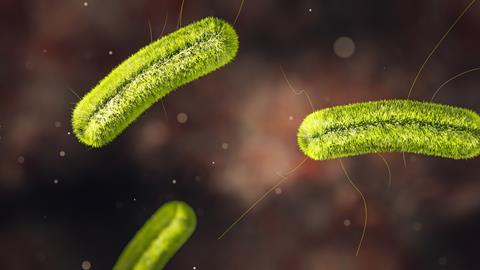Listeria is both deadly and difficult to eradicate from the food chain. What steps can be taken to prevent further outbreaks?
Listeria monocytogenes is a survivor. A food-borne pathogen, it resists freezing, refrigeration, fermentation, low pH, high salinity and even potent disinfectants. Not only persistent, it can also be fatal – particularly for vulnerable people. They are most likely to develop listeriosis, the infection listeria develops into.
As such, the mortality rate is high: 29.3% among non-pregnancy cases in 2020 in England and Wales, government figures show. In pregnancy-related cases, 34.8% suffered miscarriage or stillbirth.
This is why recent listeria outbreaks and product recalls, notably in dairy, are such a cause for concern.
This year, at least one recorded death from listeriosis has been linked to dairy. In March, the FSA said the fatality had a potential connection to a listeria outbreak in batches of recalled Baronet semi-soft cheese by The Old Cheese Room in Wiltshire.
Other investigations into listeria outbreaks this year have shone the spotlight on suppliers including Müller, Lactalis McLelland and Iceland – all of which have had to recall products. So, why do outbreaks keep occurring? And what more could be done by the dairy industry?
What is listeria?
Listeria is a group of 21 bacteria that act as a parasite in mammals. It spreads to the bloodstream and central nervous system, manifesting clinically most often as an infection of the brain or bloodstream.
According to Iwona Kawacka, a specialist in listeria at Poland’s Poznan University of Life Sciences, the pathogen “has evolved to proliferate and persist in many environments, including, unfortunately for the food industry, processing lines”. Listeria’s tenacity is partly explained by its ability to secrete a “biofilm” that protects it from food safety protocols, she explains. “The bacteria are covered in a gel that is hard for disinfectants to penetrate.”
The only surefire way to eliminate listeria is through heating above 50 degrees, via pasteurisation or similar. But a food product can still be infected at later stages of processing.
“The bacteria are covered in a gel that is hard for disinfectants to penetrate”
What causes listeria?
Listeria bacteria are not only extremely tolerant but also “abundant” at every stage of the food chain, says Kawacka. It has many opportunities to contaminate food, from the soil to consumers’ fridges.
Tina Potter, head of incidents at the FSA, adds: “It is able to enter the food production environment through multiple routes, including raw ingredients, equipment, water, clothing, and packaging.”
Thus, while most recalls this year being linked to dairy, a wide range of products are linked to listeria outbreaks. A study of listeriosis cases in the UK from 1985 to 2015, published by Cambridge University Press, found 72% were from processed meat and fish, versus only 17% from dairy.

While listeria may be transmitted to dairy cattle via silage or water and soil contamination, explains Potter, it is of most concern in chilled ready-to-eat foods that do not require further cooking or reheating.
Suppliers affected by outbreaks have been similarly non-specific about the causes. Take Iceland, which last month offered no explanation why listeria had been found in a batch of Cathedral City Cheese & Ham Gratin. Similarly, when Müller recalled six Cadbury desserts – made under licence from Mondelez – in May due to the presence of listeria at its production site, it simply described the move as “a precautionary measure”.
That was after The Old Cheese Room pulled its Baronet cheese in March. The supplier was “assessing where things went wrong”, said founder Julianna Sedli at the time.
What is done to prevent listeria?
During food manufacturing, key prevention techniques include rigorous disinfection and processing such as pasteurisation. However, a team of researchers at Cardiff Metropolitan University found in May 2022 that some strains of listeria were becoming resistant to disinfectant and non-thermal food processing techniques such as high-pressure processing.
“In pregnancy-related listeriosis cases in 2020, 34.8% suffered miscarriage or stillbirth”
And, while the team described current standards of monitoring and testing methods as “very high”, it highlighted how the common five-day gap between submitting samples of possibly contaminated food and receiving results was “not conducive to a prompt response to the presence of” listeria.
What more could be done?
In addition to a quicker turnaround on test results, Kawacka notes an emerging solution: phages. In essence, these are viruses that attack a specific bacterium and nothing else, with most evidence suggesting they are harmless to humans. More than 25 phage controls are available commercially, and are increasingly viewed as a solution to food-borne pathogens, like listeria, because they don’t affect taste, sight, smell or fermentation – especially useful in cheese.
However, Kawacka warns against viewing phages as a silver bullet since there are no known phages that will infect and kill all of listeria’s multiple strains. Instead, she advises following a ‘Swiss cheese model’, whereby each intervention or ‘layer of cheese’, has recognised imperfections, meaning multiple ‘layers’ improve chances of success. “It’s another step you can take to reduce the risk,” she says, though she stresses animal health, testing, hygiene, and quality assurance systems across the food chain are the priority.
In short: do whatever it takes to beat the bug.




















No comments yet